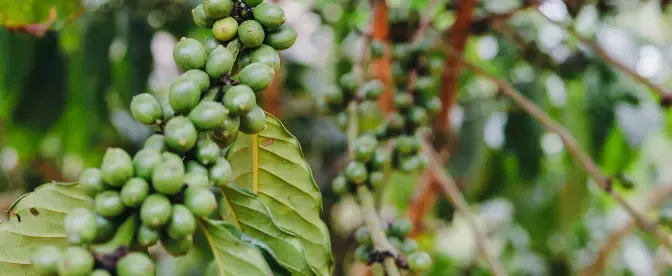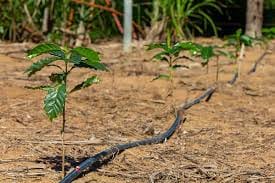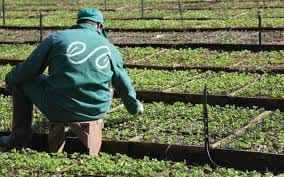Water Management and Conservation in Coffee Bean Processing
Introduction to Water Conservation in Coffee Bean Processing
In the misty valleys and sun-kissed slopes where coffee plants thrive, a delicate balance exists between abundance and scarcity, nourishment and depletion. As the world savors its daily cup of joe, the journey from bean to brew unfolds against the backdrop of water—a precious resource intertwined with the very essence of coffee culture. In this exploration of water management and conservation in coffee bean processing, we embark on a journey guided by the principles of sustainability, stewardship, and reverence for nature's bounties.

Understanding the Nexus of Water and Coffee
The story of coffee begins long before it reaches our cups—a tale entwined with the essence of water, the very lifeblood that sustains the journey from seed to sip. In the heart of every coffee bean lies a narrative woven with droplets of water, each imbued with the richness of the lands from which it springs forth. From the mist-shrouded mountains of Ethiopia to the sun-drenched plantations of Brazil, water courses through the veins of coffee cultivation, shaping the character and quality of the final brew.
At every stage of the coffee production chain, from seedling to harvest, from processing to packaging, water is a silent protagonist, influencing the flavor, aroma, and profile of the coffee we know and love. In the fertile soils of coffee-growing regions, water nourishes the roots of the coffee plant, providing the essential hydration needed for growth and development. As the coffee cherries ripen on the branch, water infuses them with the sweetness and acidity that characterize their unique taste.
Yet, amidst the abundance of nature's bounty, a shadow looms—a specter of water scarcity, pollution, and inefficiency that threatens to disrupt the delicate balance of the coffee ecosystem. In regions where water is scarce, coffee farmers grapple with the challenge of irrigation, seeking innovative solutions to ensure the survival of their crops in the face of changing climates. In processing facilities, wastewater streams laden with pulp and residues pose a threat to local waterways, calling for improved management practices and treatment technologies to safeguard the environment.
As worldwide demand for coffee grows, so does the need to address these water-related issues with urgency and resolution. For coffee industry stakeholders, from growers to processors to consumers, the challenge at hand is clear: rethink outdated practices, embrace innovative solutions, and pave a route to a more sustainable future. By using the power of technology, collaboration, and stewardship, we can ensure that every sip of coffee is not just a sensory joy, but also a tribute to our dedication to protecting the precious resource on which it is based: water.

Managing the Rapids of Wastewater Management
Water travels through a complicated network of canals, tanks, and vats in the maze-like world of coffee bean processing, carrying the leftovers of fermentation, washing, and pulping. Among the flurry of activity at coffee mills and processing facilities, the challenge of wastewater management looms large, necessitating attention, innovation, and a commitment to environmental responsibility.
From the murky depths of effluent ponds to the shimmering surfaces of settling tanks, the journey towards sustainable wastewater management is fraught with obstacles and opportunities. Within this intricate web of pipes and valves, coffee processors grapple with the dual imperatives of pollution prevention and resource conservation, seeking innovative solutions to minimize water usage, mitigate environmental impact, and optimize operational efficiency.
Advanced Treatment Technology
The coffee processing industry is experiencing a silent revolution driven by innovation, technology, and a strong commitment to environmental responsibility. From modern filtering systems to cutting-edge bio-digesters, coffee processors are adopting a wide range of treatment technologies to recover, recycle, and reuse wastewater, transforming what was previously considered trash into a lucrative resource.
By utilizing bioremediation, membrane filtering, and electrocoagulation, coffee processors may purify wastewater, reduce pollution, and reduce their environmental imprint, paving the path for a more sustainable future. The bounds of possibility are always being pushed via ongoing research and development, as scientists and engineers work to develop new and improved treatment technologies that achieve the dual goals of effectiveness and efficiency.

Closed-Loop Water Systems
In the quest for water conservation, coffee processors are turning towards closed-loop water systems—a holistic approach that seeks to minimize water usage, maximize efficiency, and eliminate waste. By capturing, treating, and recirculating water throughout the processing cycle, closed-loop systems offer a pathway towards resource optimization and environmental stewardship.
From the pulping station to the fermentation tanks, every drop of water is carefully handled, utilized, and recycled to ensure that this valuable resource is protected and safeguarded for future generations. As global coffee consumption grows, closed-loop water systems provide a practical solution to the coffee industry's sustainability concerns, serving as a model for responsible water management that can be copied and scaled across geographies and sectors.
Community Engagement and Capacity Building: Sustainable water management in coffee-growing regions requires both human and technological efforts. Through community engagement, capacity building, and stakeholder collaboration, coffee producers, processors, and local communities can work together to address water-related concerns and create resilience in the face of climate change.
From training programs on water conservation techniques to participatory decision-making processes, community-driven initiatives foster a sense of ownership, empowerment, and collective responsibility, laying the groundwork for a more sustainable coffee industry. By nurturing partnerships and fostering dialogue, stakeholders can co-create solutions that reflect the diverse needs, values, and aspirations of local communities, ensuring that water management strategies are contextually relevant, socially inclusive, and environmentally sound.
Policy Support and Regulatory Frameworks
Policymakers can use governance and regulatory frameworks to promote sustainable water management in the coffee business. Governments may stimulate innovation, investment, and collaboration by establishing strong environmental regulations, incentivizing water-saving devices, and encouraging multi-stakeholder alliances.
Coffee-producing countries may pave the road to a more sustainable future by implementing legislative and regulatory frameworks that value, conserve, and protect water as a valuable resource. Policymakers can exhibit global leadership by aligning national goals with international commitments such as the Sustainable Development Goals (SDGs) and the Paris Agreement, which signal their commitment to sustainability, resilience, and equitable development.
Conclusion: Savoring the Fruits of Sustainability
As we raise our cups to toast the dawn of a new era in coffee bean processing, let us savor not only the rich flavors and aromas but also the fruits of sustainability, stewardship, and collective action. In the delicate balance between abundance and scarcity, nourishment and depletion, lies the essence of our shared journey—a journey towards a future where every sip of coffee is a testament to our reverence for nature, our commitment to sustainability, and our unwavering belief in the power of collective action to shape a better world.